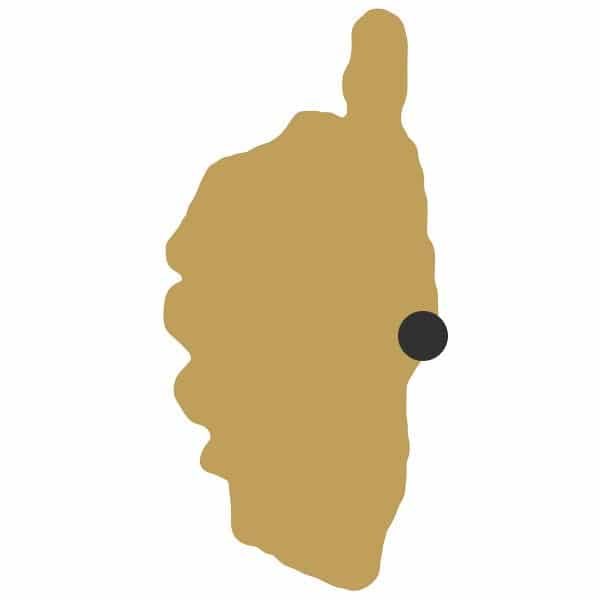
Travel back in time to discover a fascinating collection of ancient artifacts at the Departmental Museum of Archaeology Jérome Carcopino located in Corsica’s Roman capital- Aleria.
The Genoese Fort of Matra housing a sound exhibition of Roman, Etruscan, Bronze, and Iron Age finds with the adjacent site where remnants of a Roman settlement were excavated, tell a compelling story of Corsica’s rich historical heritage.
This page contains affiliate links meaning I get a commission if you decide to make a purchase through my links, at no extra cost to you. Click here to learn more.
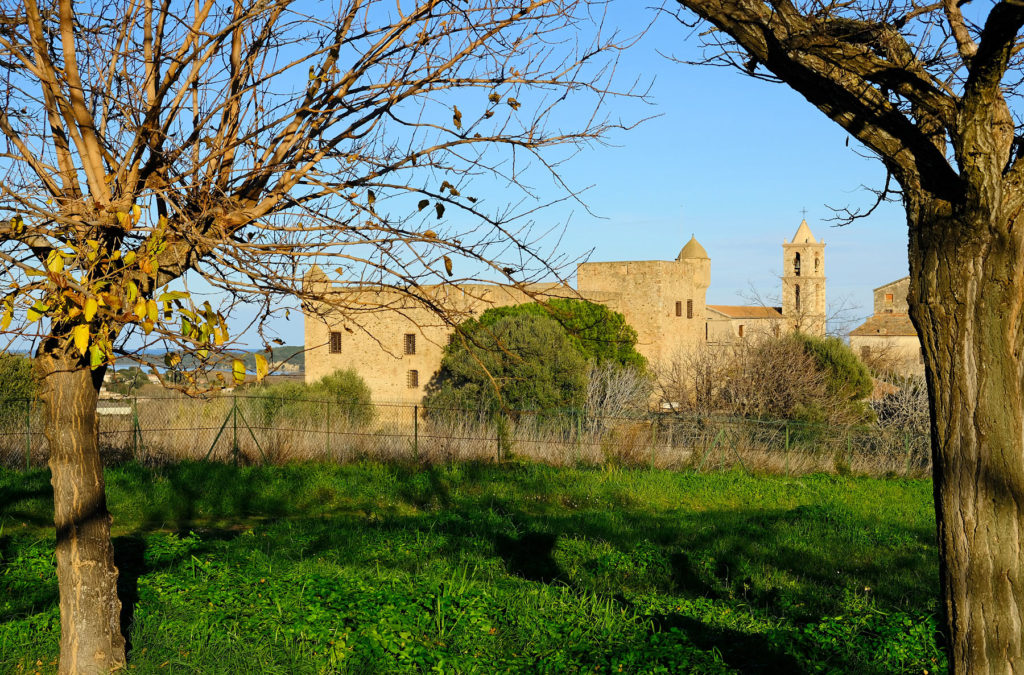
ALERIA – LOCATION
Aleria, a historic town founded in the 6C BC is located on the Costa Serena, Corsica’s Eastern Plain, halfway between Bastia and Porto Vecchio.
Nestled in the heart of the lower Tavignano Valley between the Pond of Diane and the Pond of Urbino this popular coastal resort benefits from a mild microclimate and fertile soils perfect for farming. Mostly family-run modern agricultural and horticultural activity results in the production of the highest quality products including delicious kiwis, clementines, grapes, or peaches while large freshwater lagoons offer mouth-watering oysters, mussels, and clams.
The proximity of the warm waters of the Mediterranean with a 12 km long sandy coastal stretch draws tourists to the modern part of the town called Cateraggio in the hot summer months.
The ancient Aleria bears witness to a remarkable history of the region where 15 centuries of human activity are chronicled in timeworn monuments and a compelling collection of locally unearthed Roman and Greek artifacts.
The excavated objects may be admired at the Departmental Museum of Archaeology of Aleria housed in the recently restored Fort of Matra built by the Genoese in the 14th century and classified as a historic monument in 1962.
Opposite the Fort, in the place of a former Romanesque Cathedrale, there is a church of Saint-Marcel constructed partly with stones found at the Roman site.
In the adjacent archaeological site, comprehensive excavations revealed pre-Roman necropolis and Roman remnants of the forum, temple, capitol, and balneum providing a rare insight into the intriguing ancient civilizations.
Overlooked by the highest mountain peaks of the region with panoramic views across the green banks of the Tavignano River hugging the valley, Aleria remains a prominent tourist and cultural center of Corsica’s East Coast.

HISTORY OF ALERIA
- Signs of the first human settlements in the region date back to 6C BC. From the Neolithic period to the Iron Age farmers and shepherds occupied the area utilizing natural resources provided by fertile soils.
- In around 565 BC the Phoceans driven out by the Persians from their homeland founded a port of Alalia engaging in trade with other civilizations from the Mediterranean basin. Apart from erecting solid buildings and temples the Greeks also initiated the cultivation of vines and olives, the production of ceramics, and the development of arts and literature.
- Attacked by the Carthaginians and Etruscans in 535 BC, the Greeks fled to Italy and Massiglia (Marseille) keeping Alalia as a trading channel to other Mediterranean colonies.
- In 259 Alalia was conquered by the Romans and gained prominence as a leading Corsican port under a new name- Aleria. Over the centuries the town developed public buildings with a forum, thermal baths, a court, and shops. During this period of prosperity, Aleria exported large quantities of oil, cork, and granite and became an important crafts center producing jewelry and ceramics. The Pond of Diane sheltered Emperor Augustus’s fleet.
- In the 5th century, the Roman rule in Aleria came to an end. The region suffered from violent Vandal attacks and was ravaged by malaria epidemics. For many centuries human occupancy of the affected areas was impossible.
- Redevelopment of Aleria came with the Genoese rule of the island in the 13th century. The town became a seat of a bishopric and the Fort of Matra accommodated a squadron of cavalry assigned to supervise the district.
- In 1824 the Aleria municipality was created.
- After World War II, thanks to the sanitation procedures implemented by the American army the area became repopulated.
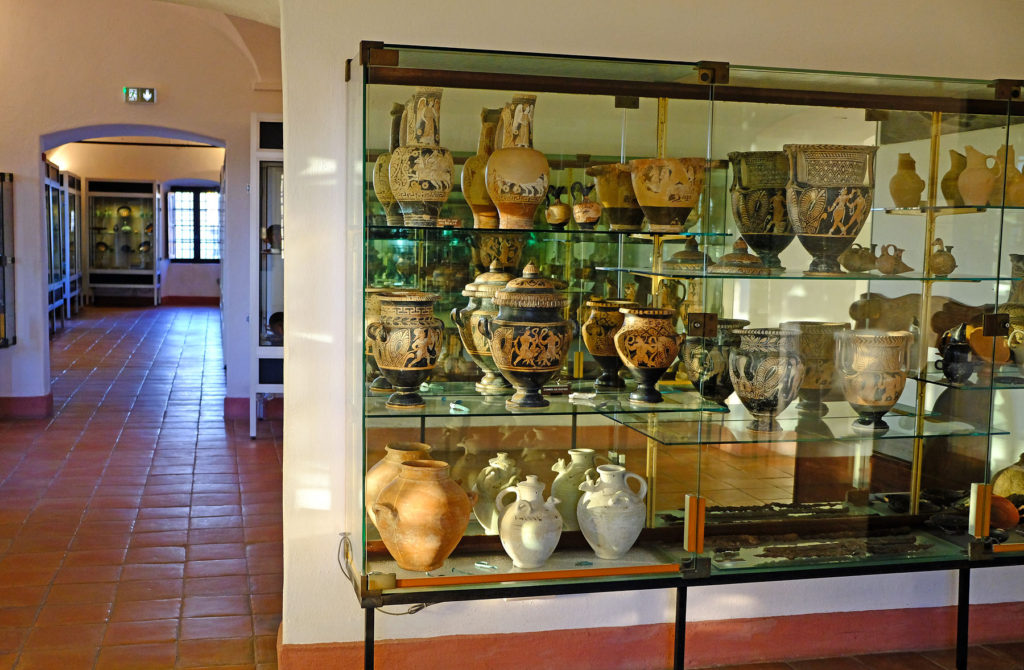
DEPARTMENTAL MUSEUM OF ARCHEOLOGY JÉROME CARCOPINO
- The Museum of Aleria is located in the Fort of Matra, a historic building constructed by the Genoese in the 14th century.
- Classified as a historic monument in 1962 the Fort of Matra has sheltered exciting historical artifacts dating back to pre-Roman times since 1963.
- In 1969 the Museum was named Jérome Carcopino after a prominent Corsican historian who sponsored the excavation works at the site of Aleria and in 1979 it was acquired by the Department of Haute-Corse.
- The exhibition chronicling fifteen centuries of Corsica’s history is housed in several rooms on the first floor of the fort.
- The first room showcases everyday items and religious objects providing an extraordinary insight into the daily lives of their owners. A second-century marble bust of Jupiter Ammon unearthed in the southern part of the Roman town is a highlight of this part of the display.
- The second room features beautifully painted Etruscan ceramics- vases, goblets, and other well-preserved earthenware.
- An attic bowl credited to
Panaitos representing Dionysus surrounded by maenads, his female followers, displayed in the third room remains one of the museum’s most celebrated finds. - The fourth room boasts two extraordinary rhytons (drinking vessels), one representing the head of a mule with his mouth open and ears lying back and the other one in the form of a dog’s head. Beautifully decorated the vases are thought to have been created by a Greek potter called Brygos although the name of the painter remains unknown. The rest of the exposition includes beautiful jewelry from 4-2C BC, Etruscan dishes, and artifacts unearthed in Alerian tombs- lances, daggers, and swords dating back to 5C BC.
- The courtyard of the museum is guarded by an Etruscan statue of a lion found in 1975 in the archaeological site of Aleria.
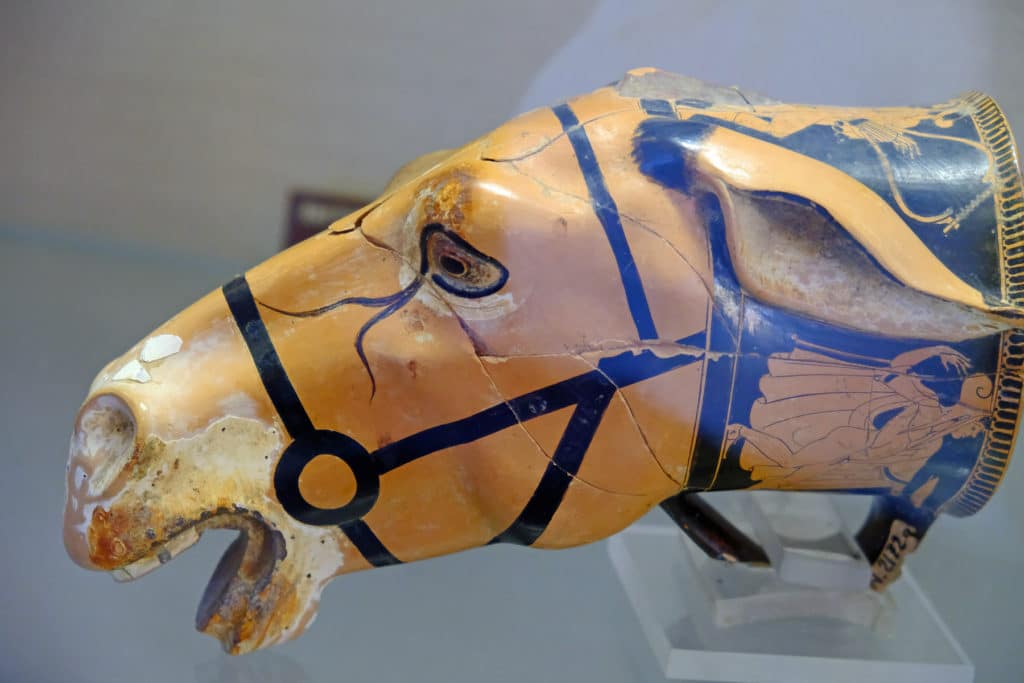
THE ROMAN SITE
- Ruins of the ancient Aleria were first described by Prosper Merimée (1803-70), an Inspector of Historic Monuments during his survey of Corsica in 1839.
- The first excavations took place between 1955-1960 and were undertaken by a Corsican archaeologist Jean Jehasse. At this time most of the Roman remnants were unearthed, including the forum.
- The pre-Roman necropolis located further south was excavated between 1960-81.
- A large part of the ancient city remains buried to this day. A conservation project undertaken by archaeologists appointed by Corsica’s regional government focuses its efforts on the maintenance and restoration of ancient monuments.
- Key discoveries of the site include Augustus’s triumphal arch, the praetorium located at the western end of the forum (public square), the
balneum , a bath complex where the caldarium, a hot bathing room was formerly supplied with heated water, and on the eastern edge the foundations of the temple and shops.
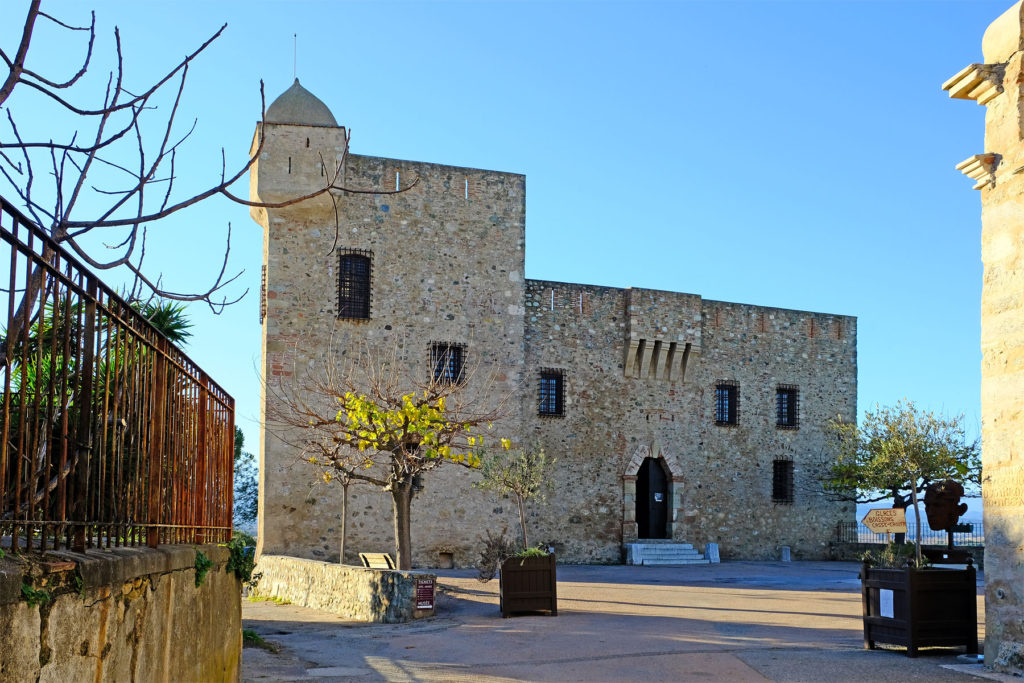
PRACTICAL INFORMATION
- Aleria is located on T10, 70 km south of Bastia and 100 km north of Bonifacio.
- The Museum opening hours are 9:00-12:00, 13:00-18:00 from 16th May to the end of September and 8:00-12:00, 13:00-17:00 from the beginning of October to 15th May. From the 1st of November to the 31st of March the Museum is closed on Sundays.
- The Roman Site closes 30 min before the Museum.
- The fare is 4 € per person (free for children under 10 years) and includes both the Museum visit as well as the archaeological site tour.
- Brochures with detailed information regarding the complex and a site map are available at the ticket office.
- Allow around 1-2 hours for a full visit.
- There is a café next to the Museum where you may purchase refreshments and rest in the shade.
HELPFUL TRAVEL RESOURCES :
Please help support CoolCorsica!
If you find this website as useful as a guidebook you may have had to buy to plan your adventures, please consider helping me with a small donation.
This all-content traveler-focused site is created in my spare time with a desire to share comprehensive information, useful tips, and inspiring photos of Corsica’s most scenic locations.
Please note that certain products/services and links to products/services are affiliate links and I may earn a commission for any purchases that you make, at no additional cost to you. I truly appreciate your use of any of the links I share.
With your generous help, I can continue to offer my advice and support in planning your dream holiday.
Thank you for your contribution!
